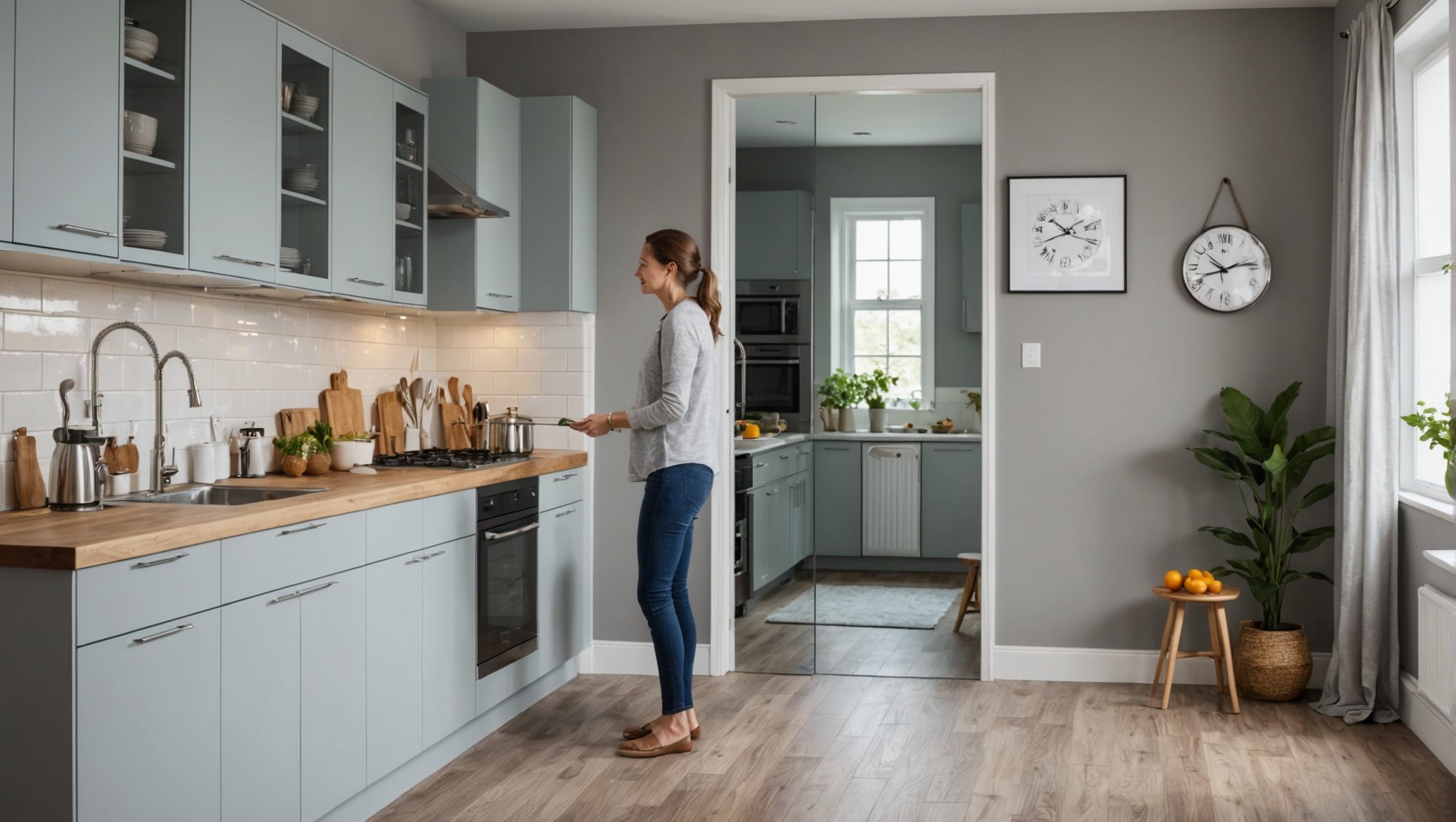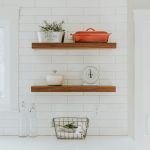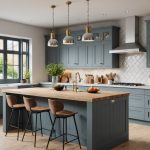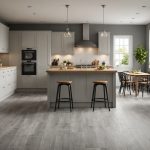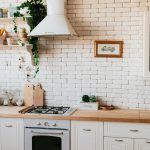Transform your kitchen experience with a simple yet impactful addition: a full-length mirror. This unexpected tool can significantly enhance your self-awareness, aiding in mindful eating habits and better diet control. Discover how this reflective surface influences your perceptions and choices, promoting healthier lifestyle adjustments. Learn to use your kitchen space effectively, while fostering a positive mindset towards your nutritional goals. Embrace this innovative approach for transformative results.
Psychological Benefits of a Full-Length Mirror in the Kitchen
Placing a full-length mirror in the kitchen can have intriguing psychological effects, particularly on eating habits. The presence of a mirror can foster self-awareness, encouraging individuals to reflect on their choices. When one sees their reflection while eating, it may prompt more mindful eating practices. This heightened awareness can lead to healthier food choices, as individuals become more conscious of their actions.
This might interest you : Transform Your Meal Planning: The Benefits of a Kitchen Chalkboard Wall for Tracking Dietary Goals
Mirrors can also play a significant role in enhancing self-image and confidence. Seeing oneself in a positive light can boost self-esteem, which might influence one’s relationship with food. When individuals feel better about themselves, they are more likely to make decisions that align with their health goals. This connection between visual cues and self-perception can be a powerful motivator for adopting better eating habits.
Moreover, the psychological effects of mirrors extend beyond self-awareness. They can serve as a constant reminder to practice mindful eating. By providing visual cues, mirrors can help individuals slow down and savour each bite, promoting a more enjoyable and fulfilling dining experience. This can lead to improved digestion and a greater appreciation for food. In essence, a full-length mirror in the kitchen can be a subtle yet effective tool for fostering healthier eating behaviours.
Also to read : Unlocking a Slimmer You: The Benefits of a Digital Nutrient Tracker on Your Fridge
Physical Benefits of Incorporating a Full-Length Mirror
Incorporating a full-length mirror in your kitchen can significantly enhance the space’s visual perception. By reflecting light, mirrors can create an illusion of a larger kitchen space, making even the smallest kitchens feel more open and inviting. This can be particularly beneficial in homes where the kitchen layout is compact or enclosed.
Space Enhancement and Kitchen Layout
- Space Enhancement: Mirrors can trick the eye into perceiving more depth, effectively doubling the visual space. This can make a cramped kitchen feel expansive and airy.
- Kitchen Layout: Strategically placing a mirror can improve the flow and functionality of the kitchen design. It can guide the eye smoothly across the room, creating a sense of continuity and harmony.
Additionally, mirrors can improve lighting and ambiance. By reflecting both natural and artificial light, they can brighten up darker areas of the kitchen. This not only enhances the overall aesthetic but also makes the space more functional for cooking and entertaining. A well-lit kitchen is crucial for safety and efficiency, and mirrors provide a simple yet effective solution.
Practical Tips for Effective Mirror Placement
When it comes to mirror placement tips in the kitchen, strategic positioning is key to maximising both light and space. The right kitchen design can transform a room, making it feel larger and more inviting.
Ideal Locations for Full-Length Mirrors
Positioning a full-length mirror opposite a window can significantly enhance natural light reflection, brightening the entire kitchen. This placement not only illuminates the space but also creates a sense of openness. Additionally, placing mirrors on walls adjacent to dining areas can foster a more engaging and lively atmosphere.
Maximising Light and Space
To fully capitalise on a mirror’s ability to expand visual space, consider placing it at eye level. This ensures that the mirror reflects the most light possible, effectively doubling the perceived area. Mirrors should also be angled to catch and reflect the most light from overhead fixtures or windows.
Avoiding Common Placement Mistakes
Avoid placing mirrors where they reflect clutter or unattractive views, as this can detract from the kitchen’s aesthetic. Ensure that mirrors are securely mounted to prevent accidents, especially in high-traffic areas. By following these interior styling tips, you can optimise your kitchen’s functionality and style.
Styling a Full-Length Mirror in Your Kitchen
Integrating a full-length mirror into your kitchen design can elevate the overall aesthetic appeal, making it a central piece of your kitchen decor. Choosing the right frame and style is crucial to ensure the mirror complements your existing kitchen decor. Opt for frames that harmonise with your kitchen’s colour scheme and materials, such as wood, metal, or minimalist designs, to enhance the space’s cohesive look.
Incorporating complementary accessories around the mirror can add visual interest and depth. Consider placing decorative items like plants, art pieces, or small shelves nearby to create a balanced and engaging visual display. These accessories can accentuate the mirror’s presence and contribute to a well-rounded kitchen decor.
Balancing functionality and aesthetics is essential in kitchen design. While the mirror serves a practical purpose by enhancing light and space, its styling should not overpower the kitchen’s functionality. Ensure that the mirror’s placement and design do not interfere with essential kitchen activities. By thoughtfully integrating a full-length mirror into your kitchen, you can achieve a harmonious blend of utility and style, creating a space that is both beautiful and functional.
Full-Length Mirrors as Motivational Tools
Incorporating a full-length mirror in the kitchen can serve as a powerful motivational tool for diet control. By acting as a constant visual reminder of personal goals, mirrors help reinforce the commitment to healthier eating habits. When individuals see their reflection while making food choices, they are more likely to engage in self-monitoring, which is essential for maintaining accountability.
The psychological impact of seeing oneself during meals can be profound. It encourages individuals to pause and reflect on their eating habits, fostering a deeper sense of awareness and mindfulness. This heightened self-awareness can lead to more intentional food choices, as individuals become more conscious of their actions and their consequences.
Mirrors can also act as a form of self-monitoring, providing immediate feedback on one’s behaviour. This can be particularly beneficial for those aiming to adhere to specific dietary goals. By visually confronting oneself, individuals are more likely to hold themselves accountable for their decisions, promoting a sense of responsibility and self-discipline.
In essence, strategically placing a full-length mirror in the kitchen can transform it into a space that not only supports physical health but also nurtures a positive psychological relationship with food and self-image.
Combining Full-Length Mirrors with Diet Plans
Integrating full-length mirrors into your kitchen can significantly enhance diet control strategies. By incorporating mirrors into meal planning and preparation, individuals can align their kitchen environment with their specific diet goals. This setup allows for constant visual self-assessment, encouraging more mindful eating habits.
Mirrors serve as a reflective tool, promoting nutritional awareness. When preparing meals, seeing your reflection can prompt a more conscious evaluation of portion sizes and ingredient choices. This visual cue can help reinforce dietary intentions, ensuring that meal preparation aligns with health objectives.
To further encourage mindful eating, consider placing the mirror where it can be easily seen during meals. This positioning allows for a continuous self-assessment, fostering a deeper connection between your dietary choices and personal health goals. The presence of the mirror acts as a reminder to savour each bite, enhancing the dining experience by promoting slower, more deliberate eating practices.
Aligning mirror usage with specific diet goals can transform the kitchen into a supportive environment for achieving nutritional objectives. By integrating mirrors into your diet plan, you create a space that not only aids in diet control strategies but also nurtures a positive relationship with food and self-image.
Enhancing Kitchen Experience with Mirrors
Incorporating mirrors into the kitchen environment can transform the cooking experience into a more engaging and enjoyable activity. Mirrors influence the overall atmosphere by reflecting and amplifying light, which can make the kitchen feel more vibrant and lively. This enhanced ambiance can uplift the mood, making cooking a more pleasurable task.
Mirrors also play a crucial role in enhancing sensory engagement. By providing visual feedback, they allow cooks to observe their actions from different angles, offering a unique perspective on food preparation. This can lead to a more immersive cooking experience, as individuals become more aware of their movements and techniques.
Moreover, the presence of mirrors can stimulate creativity in the kitchen. Seeing one’s reflection while cooking can inspire experimentation with new recipes or techniques, as it creates a dynamic and interactive environment. This can lead to a greater sense of satisfaction and accomplishment in the kitchen.
In essence, strategically placing mirrors in the kitchen not only improves the space’s visual appeal but also enriches the cooking experience. By fostering a more engaging atmosphere and enhancing sensory awareness, mirrors can make cooking a more fulfilling and enjoyable activity.
Case Studies: Successful Mirror Implementations
In exploring the transformative power of full-length mirrors in kitchens, several real-life examples highlight their impact. These case studies illustrate how mirrors can redefine a kitchen’s functionality and aesthetic appeal.
One notable example involves a compact kitchen that underwent a remarkable transformation. By strategically placing a full-length mirror opposite a window, the space appeared significantly larger and brighter. The owner noted a profound change in their cooking experience, citing increased enjoyment and efficiency.
User testimonials further underscore the influence of mirrors on eating habits. One individual shared that seeing their reflection while preparing meals prompted healthier food choices. This real-life example demonstrates how mirrors can serve as a subtle yet powerful motivator for maintaining dietary goals.
Before-and-after scenarios in kitchen design also reveal the aesthetic and functional enhancements brought by mirrors. In one instance, a previously dark and cramped kitchen was revitalised by adding a mirror along one wall. The result was a visually appealing and more inviting space, encouraging more time spent in the kitchen.
These real-life examples and user testimonials affirm the potential of full-length mirrors to transform kitchens, making them more enjoyable and conducive to healthier living.
Tips for Maintaining and Caring for Your Kitchen Mirror
Proper mirror maintenance is essential for preserving both its functionality and aesthetic appeal in your kitchen. Start by using gentle, non-abrasive cleaning techniques. A mixture of water and vinegar can be effective for cleaning mirrors without leaving streaks. Apply the solution with a soft cloth, and use a dry microfiber cloth to polish the surface for a streak-free shine.
To maintain the mirror’s aesthetic appeal, regularly inspect it for dust and smudges. Frequent cleaning will prevent build-up and keep the mirror looking pristine. Consider placing the mirror away from areas prone to splashes or grease, as this can minimise the need for constant cleaning.
Preventative measures can significantly extend the longevity of your kitchen mirror. Avoid using harsh chemicals or abrasive materials that can scratch or damage the mirror’s surface. Ensure the mirror is securely mounted to prevent accidents, especially in high-traffic areas.
By following these cleaning tips and maintenance strategies, you can ensure your kitchen mirror remains a beautiful and functional element of your space. Regular care not only enhances the mirror’s appearance but also contributes to a more inviting and well-maintained kitchen environment.

